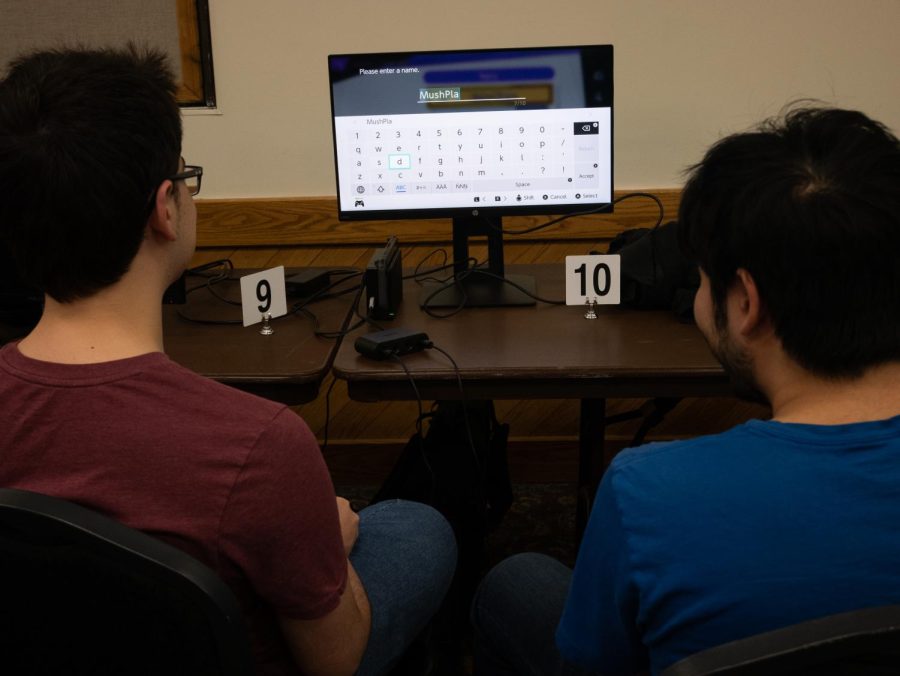Editor’s Note: The following column is satirical. It is meant for humorous purposes. All interviews and individuals are fictitious.
If you walk past the W.E.B Du Bois library on any given Friday afternoon, you’re bound to encounter a herd of high schoolers and their parents obstructing the sidewalk while orbiting aimlessly around one nametag-clad, over-caffeinated University of Massachusetts student tour guide. Due to the average Massachusetts high schooler’s complete lack of chill over the college application process, their approval of the UMass campus community is of utmost importance to the University’s bottom line.
UMass is willing to do anything to get prospective students “Minuteman-pilled” and committed. This is where the current study body comes in handy.
Unbeknownst to most students, if you scroll to the bottom of the UMass enrollment portal, there is a line of fine print that states: “In enrolling at the University of Massachusetts Amherst, I, [stated name], agree to be absorbed into the University’s simulation non-playable character (NPC) singularity, surrendering conscious existence for the purposes of being used for university-sanctioned marketing strategies.”
That’s right. We, the students, are merely an elaborate simulation of pre-programmed NPCs used to make the campus appear more realistic and admirable to tour groups. It may be hard to accept this, but the closer you look at the campus community, the more obvious it becomes.
First off, student tour guides themselves are simply NPCs with a pre-programmed database of UMass propaganda buzzwords and phrases such as, “number one dining” and “interdisciplinary.” These words are then randomly applied to a dialogue box template in order to give the illusion of reality. The tour guides will pause in front of a building for a moment, allow the artificial intelligence, or AI, to update location data, smile and enthusiastically procure a campy, downright false claim such as, “Students use the library’s academic resources all the time!”
Upon entering any building, NPC behavior in the student body is evident. Since these students are merely filler content for campus buildings, they exhibit the same exact habits as any basic unattended sim in The Sims 4. Students can be found standing in the middle of a room for hours with no apparent purpose, waiting for their AI to calculate a task. If any object whatsoever blocks a students’ gridded walking path, they will wave their arms in panic. In order to make more variable AI, UMass made sure to code in four fundamental college student emotions: hunger, stress, apathy and lust.
Furthermore, NPC behavior in the student body can be seen during their class commutes. Students may attribute their ability to subconsciously navigate their way to classes to muscle memory, but they’re really just following pre-programmed looped walking paths.
The campus only renders within a certain radius around every tour group, so students with walking paths that go more than a half-mile off-campus simply drop off the edge of the world map altogether. Their AI consciousness is then stored in a hypothetical database until it is convenient to use them again. Students who say, “This semester went by really fast!” may want to question for how much of the semester they actually physically existed.
While walking through the W.E.B Du Bois wind tunnel, harsh winds have apparently caused an environmental overload to the simulation. Students’ entity bodies are found to completely reset while facing the wind, lagging while attempting to walk, freezing completely and re-appearing in default 3D model t-pose, while clipping halfway into the library’s brick flower beds.
Conversation among the student body also proves NPC behavior. Students only speak when approached or bumped into. When engaging with the talk function, some students’ dialogue algorithms include phrases of greeting such as, “Need something?” “Hello, traveler!” or — if prompted with too complicated of a question — “$NoData$QUEST_IV_0100_000422$”
The “Isenbro” expansion pack will give male Isenberg students the ability to respond to talk functions with “What’s good bro?” and respond to complex statements with “Yo, fr?”
Unfortunately, the new Isenbro expansion pack is only in the beta version. The 3D model for these Isenbros have only been partially rendered, morphing them into low-res polygonal body forms reminiscent of the character design in the 1997 N64 Goldeneye 007.
After a recent patch update, UMass has taken away the ability for student NPCs to give outside quests. Apparently, it was bad publicity when high school parents would approach students only to receive the side quest of, “Me and the boys need a new plug. You got a valid driver’s license?”
Some rogue NPCs are currently attempting to take advantage of the campus simulation. We recently observed a group of STEM majors attempting to “up, up, down, down, left, right, left, right, B, A, start” in order to clip through the walls at Lederle Graduate Center and access the exclusive graduate students-only offices.
Students who have mastered the art of map clipping can be seen finding points of exploitation and attempting to do college “speed runs.” These speed runners may attempt to transcend into “dev mode” in order to surpass all Gen Ed and major requirements, gain “OP” knowledge from high-level electives and rack up sufficient XP in order to face UMass’ final boss: Chancellor Kumble R. Subbaswamy himself.
We must accept the simple fact that none of us will ever be the main character. The best thing we can do is hope that the University updates its code at some point, beautifying our illusion of autonomy.
Kelly McMahan can be reached at [email protected].




















